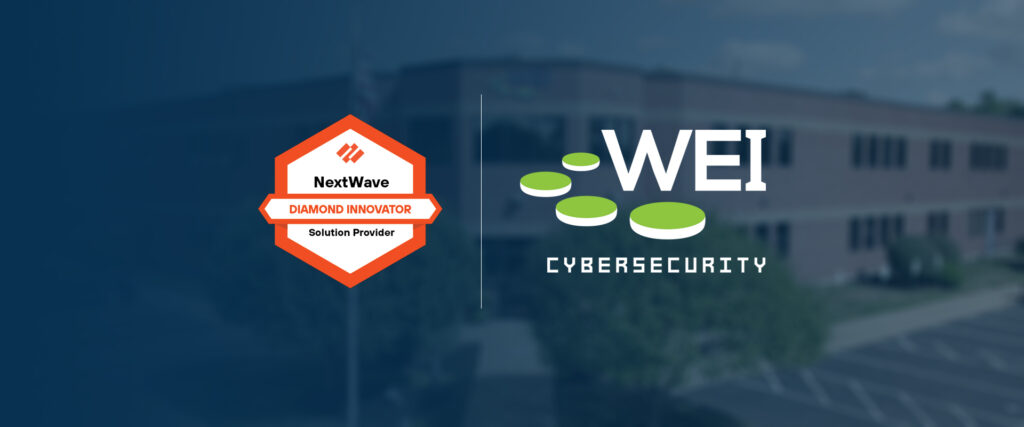
Modern enterprise networks face a shift in priorities. With employees, guests, and devices increasingly relying on wireless access, a mobile‑first network design is now the baseline expectation. Campus networking today must support a blend of wired, wireless LAN, BYOD, guest access and IoT devices, all while delivering predictable performance and security.
As an HPE Aruba Networking partner, WEI aims to help directors and C‑level technology leaders understand how strategic network design and automation can solve business challenges. In this article, we’ll outline how mobile‑first campus architectures, wireless LAN upgrades, policy‑driven segmentation, and network automation work together to create a future‑ready network that supports innovation without complexity.
Why a Mobile‑First Network Design Strategy Matters
Most organizations still rely on historic three‑tier campus designs, but demand has outpaced static wired networks. Today’s workforce expects dependable wireless across every building, meeting space and shared area. A modern campus must:
- Deliver wireless LAN performance using the latest Wi‑Fi standards
- Support high device density and BYOD without burdening IT
- Offer consistent wired access where needed, especially for IoT and fixed assets
- Adapt policy enforcement dynamically based on identity and device type
By adopting a mobile-first networking design that prioritizes the wireless experience rather than treating it as an afterthought, organizations gain better end-user satisfaction and reduced friction in daily operations.
Core Architectural Principles for a Campus Network
A validated campus network blueprint, such as HPE Aruba Networking’s ESP‑based three‑tier topology, has been proven in large scale deployments. It uses a routed core connected to aggregation switches, then to access switches. The access layer is Layer 2 only, while routing and default gateway services are provided at the aggregation layer.
With this arrangement, APs connect through access switches, gateways reside at the aggregation layer, and services like ClearPass, DNS and DHCP are centrally located in a services aggregation segment. This design supports high performance and simplifies client-to-gateway traffic flow.
Key design considerations include:
- Consistent addressing and naming: Use standardized VLAN naming, IP schemes, and device names. For example, grouping access switches as “SW‑RecognizedSite‑ACxx‑nn” fosters clarity and ease of management.
- Use of named VLANs: Map logical groups such as EMPLOYEE, PRINTER, GUEST, MGMT_VLAN consistently for policy enforcement.
- Precise segmentation: Separate management, user access, and IoT traffic using VLANs and routing isolation to uphold security and simplify troubleshooting.
This architecture can scale from hundreds to tens of thousands of users using the latest Wi‑Fi 7 APs, multi‑gig access lines, and advanced switching hardware while preserving existing infrastructure investments where possible.
Harnessing Dynamic Segmentation for Security and Policy Control
A core differentiator of HPE Aruba Networking’s approach is Dynamic Segmentation, which applies zero‑trust security and fine‑grained policy enforcement based on identity, device, time and location context.
This method enables:
- Role‑based access control across wired and wireless domains
- Automated enforcement of least‑privileged access
- Consistent policy deployment across campuses and branches, regardless of scale
Dynamic Segmentation helps businesses enforce compliance, isolate potential threats, and securely onboard BYOD and IoT devices without manual configuration for each device or VLAN. That makes it especially suitable for environments with diverse device types and rapidly changing access patterns.
Simplified Operations via Network Automation
Modern campus environments require operational agility. HPE Aruba Networking offers Aruba Central, which consolidates network management, orchestration, firmware compliance, and deployment workflows in one unified cloud-native platform.
Key benefits include:
- Zero‑touch device provisioning via group and site definitions in HPE Aruba Networking Central, enabling consistent configuration using templates
- Firmware compliance policies that ensure all devices remain on approved versions without manual upgrades across multiple sites
- AI‑driven insights, including network health dashboards, predictive alerts, and remediation suggestions so IT can address issues before users notice
This level of automation reduces the burden on IT teams, enabling them to monitor network status, deploy new access points, or roll out new policies efficiently.
The Role of a Trusted HPE Aruba Networking Partner
Working with an HPE Aruba Networking partner like WEI brings advantages beyond deploying technology. At WEI, we offer strategic guidance, real‑world experience, and alignment to business goals. Our team helps translate a director or C‑level leader’s vision into a network that:
- Prioritizes user experience and mobility
- Supports security expectations through context‑aware segmentation
- Minimizes operational overhead with automated workflows
- Preserves existing infrastructure investment while preparing for future growth
As partners, we also provide guidance on licensing, device lifecycle management, and integration with macro‑architecture platforms like HPE GreenLake and HPE Aruba Networking Central.
Overcoming Common Business Challenges
Enterprise audiences commonly face these business challenges, and a modern campus networking strategy addresses each directly:
- Supporting device growth without IT overload: Employee-owned devices, conferencing systems, and IoT sensors all require reliable access. With identity‑based policy enforcement and network automation, administrators avoid manual provisioning for every device. HPE Aruba Networking ClearPass profiling simplifies onboarding of both BYOD and IoT.
- Securing the network without disrupting user experience: Dynamic Segmentation enables contextual access control without requiring complicated configurations. This zero‑trust approach helps deliver secure access while still providing fast, reliable service.
- Aligning network modernization with existing infrastructure: By adopting wireless-first design and automated policy with HPE Aruba Networking Central, existing switches and gateways can often be repurposed. Upgrading incrementally helps limit upfront expense while aligning network capabilities to business needs.
- Maintaining predictable operations at scale: AI‑powered analytics, health reports, and consistent policy rollout reduce errors and simplify network changes. Firmware compliance ensures consistency across devices without manual checks.
Key Pillars for a Successful Campus Networking Initiative
When preparing for a network transformation, focus on these success factors:
- Adopt mobile‑first network design: Prioritize wireless connectivity needs early. Wireless should be architected to deliver the required performance levels, with wired networks complementing rather than dominating.
- Implement a proven campus architecture: Use validated three‑tier topologies with clear segmentation between core, aggregation, and access layers. Maintain consistent VLAN and IP naming across network zones.
- Use policy‑driven access control: Leverage Dynamic Segmentation to enforce granular policy across categories like employee, guest, and IoT. Access profiles can be applied in real time based on identity and device context.
- Enable cloud‑native network automation: Provision via HPE Aruba Networking Central with group and site templates, defined firmware baselines, and Zero Touch workflows to standardize deployment across buildings and geographies.
- Engage with a certified HPE Aruba Networking partner: Partner with WEI, a certified HPE Aruba Networking partner, to tap into domain expertise, align network strategy with business goals, roadmap modernization paired with investment protection, and support long‑term operations.
Key Insights for Executive IT Leadership
A controlled and future‑ready approach to campus networking enables business leaders to:
- Expand Wi‑Fi and wired capacity with minimal disruption or support impact
- Enforce access policy consistently while limiting manual intervention
- Reduce total cost of ownership by automating common tasks and optimizing existing infrastructure
- Position for future use cases such as AI analytics, data‑heavy applications, immersive corporate spaces, and dense IoT environments
As trusted advisors, WEI helps transform the network from a point solution into a strategic platform. One that enables user experience, supports secure access, and aligns to your digital transformation goals.
Next Steps
If you’re evaluating next steps, consider this structured approach:
- Conduct a current-state assessment to inventory wired, wireless, and service infrastructure across campus
- Develop a mobile‑first readiness map to identify wireless coverage gaps and areas with rising device demand
Define your policy model covering employee profiles, guest access, and IoT onboarding workflows - Evaluate HPE Aruba Networking Central and ClearPass integration for centralized policy and automated deployment
- Partner with an HPE Aruba Networking partner to align strategy, manage deployment, and support long‑term goals
Final Thoughts
Campus networking is no longer just about access. It is about enabling mobility, securing diverse devices, and simplifying operations. By combining mobile‑first wireless LAN design, validated topology, dynamic segmentation, and HPE Aruba Networking Central automation, organizations can build a network that performs reliably today and adapts confidently tomorrow.
As thought leaders and trusted advisors, WEI guides the transition from legacy campus networks to a proactive, policy‑aware environment. We help position your organization to support changing business requirements while reducing operational friction. When you’re ready, we’re here to help translate vision into execution.
Contact us to explore how mobile‑first campus strategies can help your teams move forward with control, reliability, and strategic focus.
Next Steps: Ready to achieve agile networking at the edge? Download our free tech brief, Achieve Agile Networking At The Edge, for detailed insights and learn how WEI and HPE GreenLake can revolutionize your network management strategy.






